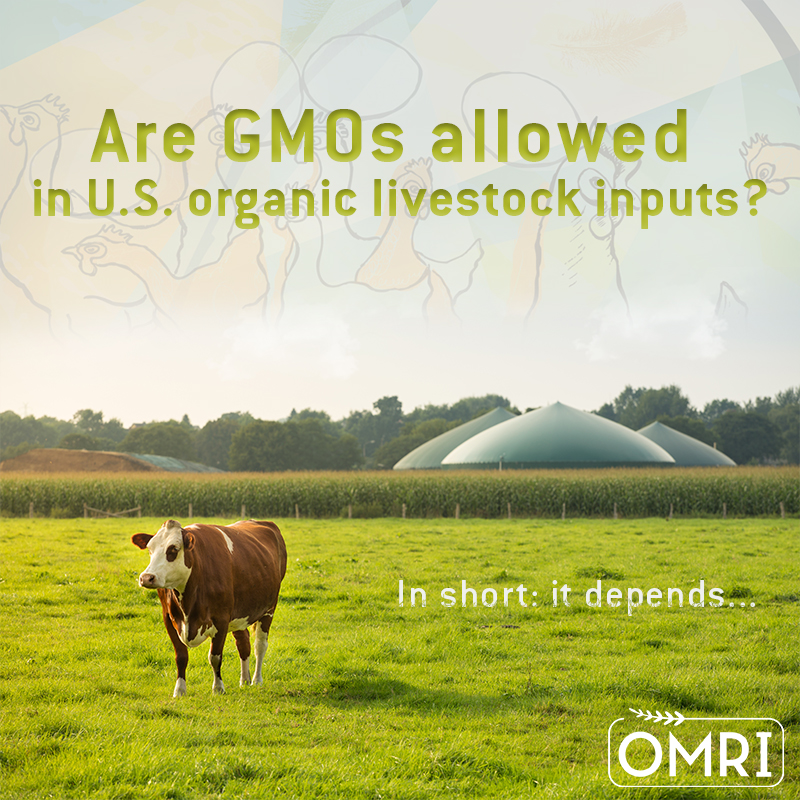GMOs as Livestock Inputs
 How does OMRI evaluate GMOs for use as livestock inputs?
How does OMRI evaluate GMOs for use as livestock inputs?
By Ana Negrete
Organic livestock production systems rely on several products, and the non-GMO (genetically modified organism) requirements vary depending on how the material is used. In order to review genetically engineered (GE) materials for use in organic livestock production, OMRI distinguishes between inputs used for nutritional purposes and inputs used for health care or as production aids.
Agricultural ingredients such as corn, soy and alfalfa that are included in livestock feed must be certified organic, and by definition are non-GMO. However, feed additives such as vitamins, minerals and probiotics which are not required to be certified organic must be evaluated for compliance with the USDA organic standards regarding GMOs. For vitamins and minerals, the National Organic Program (NOP) published Guidance 5030, which prohibits the use of proteins produced by excluded methods in proteinated and amino acid-complexed minerals. Therefore, protein obtained from GE crops (e.g., soy) is prohibited in proteinated minerals. In this same guidance, the NOP indicates that carriers in individual vitamins and minerals that are approved by the FDA or listed in the current edition of the Association of American Feed Control Officials (AAFCO) Official publication need not be reviewed, even though these carriers may potentially be sourced from GE materials. Agricultural ingredients used as carriers or diluents in formulated vitamin and mineral premixes, however, must be certified organic and therefore non-GMO.
The review of GMO materials in health care products, including vaccines, is limited to the active ingredient. Only the active ingredient must be non-GMO, while GMO excipients, such as peptone from GE soy, are allowed. This also applies to materials used as production aids, such as silage inoculants and waste treatments.
This article was originally published in the spring 2015 edition of the OMRI Materials Review Newsletter, and was reviewed and updated by Senior Bilingual Technical Coordinator Tina Jensen Augustine in October 2020.








